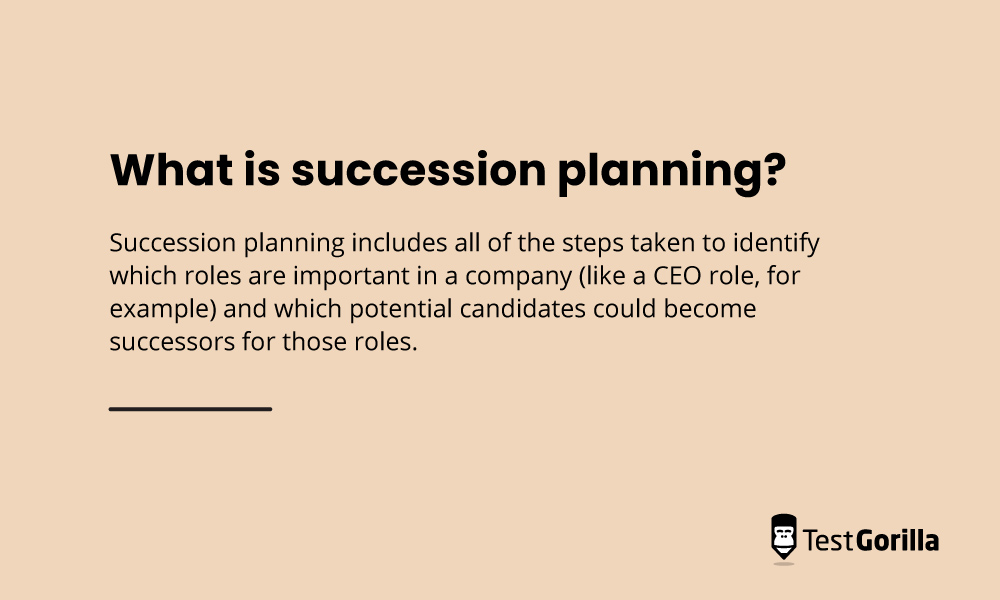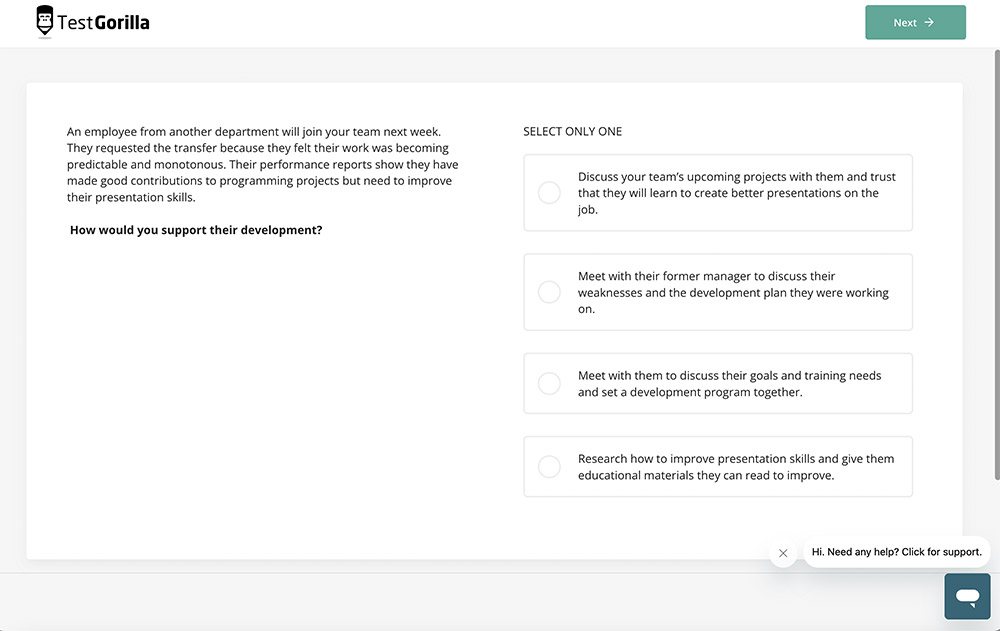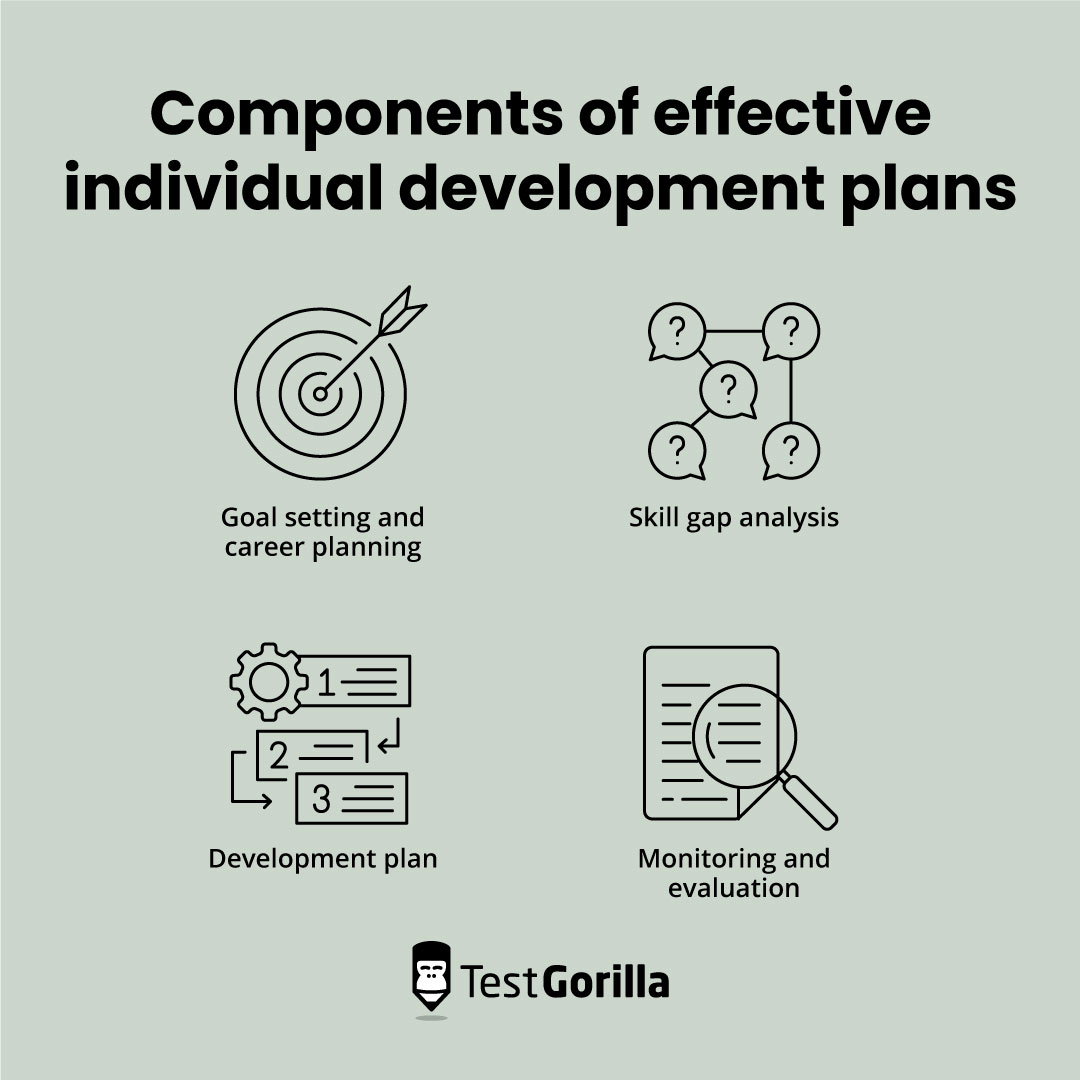10 succession planning best practices for transition triumph
How long have your company leaders and senior staff members held their positions within your organization?
However long it may be, you can bet they won’t be there forever (unless they’ve discovered a fountain of youth we don’t know about).
Enter the succession plan.
A succession plan shouldn’t just be in the back of your mind as an HR professional; it should be something you’re constantly improving and enhancing so that when the moment comes to hand over to a new staff member, your organization is fully prepared.
If your mind draws a blank when thinking about the succession planning process, this guide to succession planning best practices is for you.
But before we dive deep into the steps and tips to a stellar succession planning strategy, what exactly is succession planning?
What is meant by succession planning?
Succession planning includes all of the steps taken to identify which roles are important in a company (like a CEO role, for example) and which potential candidates could become successors for those roles.
Your succession planning efforts should go beyond simple selection though. Business succession planning starts by making sure that potential successors are prepared for the handover and making sure they have the required training, core competencies, specific skills, and experience to fill leadership roles.
It helps to be aware that effective succession planning isn’t normally achieved in a matter of hours. It should be continually tweaked and adjusted as it’s a constant process – the end goal of which is to guarantee your new leadership successor retains the former’s leader’s quality and familiarity with all aspects of the business.
Benefits of a robust succession planning process in the workplace
Why is succession planning important?
For a start, it helps organizations of all sizes ensure sustainability and growth.
According to a case study that explored leadership handover at McKinsey & Company, it's important to have a group of candidates you can select from every three years.
Planning for succession helps you identify which candidates are ideal for future leadership roles. But there are many other reasons you shouldn't forget to prepare and plan for future handovers, like the ones below.
1. Maintains organizational continuity
When you proactively prepare for leadership transitions, your organization can avoid disruptions and maintain operational stability. Succession planning ensures that there is a smooth handover of knowledge, skills, and expertise to the next generation of future leaders. It helps you visualize and understand how these high potential employees will fill their predecessor’s shoes and become potential leaders.
To put it another way, it gives you a strategy to enhance your leadership and plan ahead in terms of recruitment.
2. Enhances employee engagement and retention
A good succession planning model demonstrates to employees that the organization values their growth and development. When employees see clear career paths and opportunities for advancement, they are more motivated and engaged, leading to low employee turnover rates.
3. Develops a talent pipeline of future leaders
Succession planning goes beyond filling immediate vacancies. It cultivates a talent pipeline of future leaders who are equipped to handle the challenges and opportunities that lie ahead. This proactive approach ensures your organization has a ready pool of qualified individuals to step into senior leadership roles as needed.
4. Ensures business continuity
An unexpected departure can pose significant risks to your business operations or your organization's stability and performance. Succession planning helps mitigate these risks by having a plan in place to fill critical roles quickly and effectively. This prevents disruptions and ensures that the business can continue to operate smoothly.
5. Promotes innovation and adaptability
Another benefit of succession planning is it fosters a culture of learning and development within the organization. When you encourage employees to expand their skills and knowledge, the team becomes more adaptable and better equipped to respond to changing market conditions and technological advancements.
6. Contributes to a positive company culture
Ramping up your succession planning efforts ensures that your brand identity is maintained, as you’ll be able to nurture internal candidates before the handover, aim to continue with what works in your organization, and avoid any surprises which could hurt your company culture.
The best insights on HR and recruitment, delivered to your inbox.
Biweekly updates. No spam. Unsubscribe any time.
10 best practices to improve your succession planning model
You're now ready to supercharge your existing succession planning approach with the following best practices:
1. Have a clear vision and goal for succession planning in your organization.
First of all, you need to know the reason behind your need to create a succession strategy.
Let's say you are a mid-sized technology company focusing on software development. Your organization has grown rapidly, and you now have a team of 50 developers, several of whom have been with the company since its inception. Succession planning is critical for ensuring that the company can continue to thrive, even if key team members were to leave.
To achieve this, you would define the purpose and objectives of succession planning within your organization and align those goals with overall organizational strategy and business objectives. This would involve identifying key positions, determining necessary skills and experience, and developing a succession plan to fill those positions.
Pro tip: Think about succession planning for technical roles too, not just for leadership positions.
Succession planning is crucial for technical roles due to the specialized development required, increasing complexity and demand, talent retention challenges, and the need for a diverse talent pipeline to foster innovation and adaptability.
2. Get buy in from business leaders and executive members.
Another component of a successful succession is to involve executives and board members. They can help gauge and decide how the successor should align with the company's values and culture.
Since they are the decision-makers and understand the challenges and changes necessary to grow the business and stay ahead of competitors, their input is crucial.
3. Decide on a timeline for your succession plan.
Although you might think you have plenty of time ahead of you, you might find that one of your team members decides to leave their position on short notice. It’s important to be prepared, so be sure to plan ahead.
Here's an example of a timeline:
Phase 1: Planning and assessment (3 months)
Establish a succession planning team
Identify critical roles
Assess current talent
Establish succession planning goals
Develop a communication plan
Phase 2: Development and implementation (6 months)
Create individual development plans (IDPs)
Implement mentorship and coaching programs
Provide stretch assignments and job rotations
Conduct regular progress reviews
Phase 3: Monitoring and evaluation (6 months)
Regularly review and update succession plans
Monitor the progress of high-potential candidates
Measure the impact of succession planning initiatives
Gather feedback from key stakeholders
4. Identify critical positions and the capabilities required.
Your next step is to identify the key roles in your organization and determine whether these leadership positions will need to be filled in the future.
At this point, you need to perform job analyses for each role that may need filling. This includes keeping a log of the role's responsibilities.
You'll also need to keep track of the skills required to be successful in the vacancy to prepare your potential candidates for the role.
Finally, based on your job analyses, prepare job profiles for the roles you might need to recruit for. Your job profiles should include the skills required and detail the specific tasks typically carried out in the position.
Further reading: Differences between a job analysis and a job description
5. Carry out internal talent sourcing to identify high potential employees.
Internal talent sourcing will help identify which candidates will likely be a good fit if senior roles need filling.
Effective succession planning hinges on your ability to assess employee performance and potential accurately. This could mean going beyond traditional performance reviews and incorporating a more comprehensive approach that evaluates not only past achievements but also future potential.
Here are a few pointers to a more comprehensive approach:
Evaluate employee potential with a more systematic approach.
A systematic approach to evaluation ensures consistency, fairness, and objectivity in the hiring process. This involves establishing clear criteria and guidelines for evaluating performance, utilizing multiple sources of feedback, and conducting regular reviews to track progress and development.
Use 360-degree feedback.
Relying solely on self-assessments or supervisor evaluations can lead to biases and limitations. A 360-degree feedback offers a more holistic perspective by gathering input from focus groups of colleagues, peers, and subordinates. This multi-dimensional approach provides valuable insights into an individual's interpersonal skills, collaboration abilities, and leadership potential.
Take advantage of skills testing.
Skills testing play a crucial role in assessing specific competencies and aptitudes essential for planning the succession of senior positions. These talent assessments can provide objective data on an individual's technical skills, problem-solving abilities, and decision-making processes.
Skills tests can also reveal hidden potential among individuals that may not be readily apparent through traditional performance evaluations. Finally, skills tests provide a level playing field, ensuring all candidates have an equal opportunity to showcase their skills.
If you’re recruiting external candidates to fill your pool of succession candidates, a skills test will provide great insights into your potential successor’s aptitudes. This will make it simpler to assess whether your new team leader has the right skills for the job.
Did you know? TestGorilla’s skills tests are constantly being improved and enhanced by experts. Below is a preview of our Leadership skills test.
6. Work with high potential employees in developing individual development plans (IDPs).
Individual development plans (IDPs) are personalized roadmaps that guide high-potential employees towards achieving their career goals and fulfilling the requirements of critical roles within the organization.
It's also worth noting that developing IDPs is a collaborative process between the high-potential candidate and their manager or mentor.
Goal setting and career planning: Establish specific, attainable, relevant, and time-bound (SMART) goals that align with the candidate's career development, aspirations, and the organization's succession planning objectives.
Skill gap analysis: Identify specific skill gaps that hinder the candidate's advancement into critical roles. This may involve assessments, performance reviews, and discussions with senior management.
Development plan: Create a structured plan outlining specific training courses, workshops, mentorships, or on-the-job experiences that will address the identified skill gaps and enhance leadership competencies.
Monitoring and evaluation: Establish regular check-ins to track progress, provide feedback, and make adjustments to the IDP as needed. This ongoing evaluation ensures that the development plan remains relevant and effective.
7. Facilitate mentorship and coaching programs.
Establishing formal mentorship and executive coaching programs can accelerate the development of high-potential employees for future senior leaders.
These programs should be purposefully structured with defined objectives, strategically pairing mentors and coaches based on shared experiences, and expertise.
As a facilitator, encourage open communication, feedback, and guidance between the people involved to create a dynamic learning environment. Continuous monitoring, feedback loops, and integration with overall development strategies ensure the effectiveness of these programs for talent development.
8. Create stretch assignments and job rotation opportunities.
Stretch assignments and job rotation opportunities are a great addition to a solid succession planning framework.
For current employees with high potential, provide them with challenging assignments beyond their current skill set. You can also give them job rotation opportunities to gain diverse experiences and cross-functional collaboration to foster a culture of continuous learning and growth.
By investing in their development, you're not only enriching the capabilities of your team and organization but also creating a more well-rounded skill development for your employees.
Here are some other examples of stretch assignments where existing employees can learn new skills:
A marketer is assigned to develop and execute a new marketing campaign for a product launch.
A sales representative is asked to develop and implement a new sales strategy for a new market.
A customer service representative is tasked to lead a team of representatives in developing and implementing a new customer service training program.
Stretch assignments can be valuable for developing employees' skills and preparing them for future leadership roles. They can also motivate and engage employees, and help them feel like they are making a significant contribution to the organization.
9. Communicate your succession planning goals with employees.
Involve employees in the planning process to empower them and ensure diverse perspectives are considered. For example, you can recognize and publicly reward high-potential employees to boost morale and reinforce the importance of growth. This could include career advancement opportunities, employee incentive programs, special projects, or tailored training programs.
You can also implement a system that rewards employees committed to development, inspiring them to contribute more to their own growth and the organization's success.
10. Evaluate your succession planning approach to judge its effectiveness.
Just because a successor has been hired, this doesn’t mean your work is over! Your final step is to evaluate the new employee and see whether they fit well within the role. Some top ways to measure their success include:
Considering your talent retention success
Analyzing your turnover rates, and
Assessing your recruiting costs
You’ll want to evaluate these criteria over time to ensure that your succession planning has been a success, and also look for ways to improve it.
Use skills testing to identify potential candidates for succession planning
Though you might have thought about it, resist the temptation to postpone succession planning! Remember, with a good succession plan, you will maintain:
Your organization’s brand with a continual leadership style
Your successor’s success rate within the company by pinpointing training opportunities, and
Your overall team’s success, as they’ll have strong leadership and inspiration to continue hitting targets
Even though the succession transition period can present various challenges, planning for it will help you achieve long-lasting business success.
Don't forget to explore TestGorilla’s skills testing platform to identify candidates who have the skills and competencies required for critical roles in your organization. Take a product tour or try it out for yourself today.
Further reading:
Related posts
You've scrolled this far
Why not try TestGorilla for free, and see what happens when you put skills first.


















